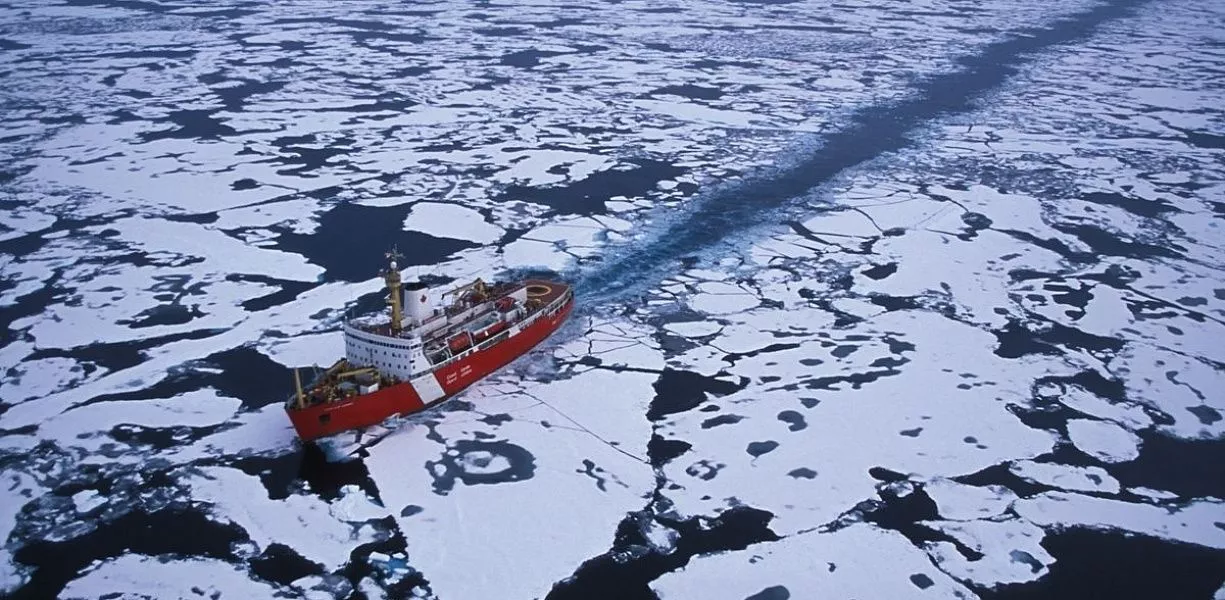Drawn to the sea again: The Arctic Ocean as destiny
 The situation has not changed
The situation has not changed
The Belarusian authorities are stepping up efforts to increase the capacity of the eastern export gateway – boasting access to the seven seas. The Northern Sea Route, which has significant but questionable development prospects, is the focus of interest. What is this “path” more full of – economic calculations or propagandistic fantasies?

On 27 April, representatives of the transport ministries of Belarus and Russia met in Moscow to discuss the development of transport links between the countries. In particular, further steps were considered to fulfil some items of the 2024-2026 Action Plan of the Main Directions of Implementation of the Treaty on the Establishment of the Union State. There were no public summaries or high-profile announcements, and this routine event would otherwise be of no interest were it not for the context: Minsk is stepping up its efforts to increase the capacity of the eastern export gateway (with access to the Atlantic and Pacific oceans).
It should be noted in particular that the actual issues of Belarusian exports – both in monetary and physical terms – are not problematised or even raised. The default assumption is that growth is sustainable, inevitable and even unstoppable.
Recently, Belarusian Prime Minister Raman Halouchanka said that increased cooperation with Russia is irreversible, even if Western sanctions are eased. Thanks to the port infrastructure of the Russian Federation, he said, Belarus can freely transport its goods across the Pacific and Atlantic Oceans. With access to the Northern Sea Route (NSR), there is the possibility of free access to the world’s oceans, regardless of how events develop around the Baltic Sea, for example. It is not entirely clear what is meant by “gaining access”, which Russia has never denied to Belarus or sanctioned.
On 22 April an agreement was signed on the construction of a Belarusian cargo transhipment terminal in the Murmansk Region. The complex is expected to be operational in 2028. The Belarusian authorities expect to be able to use the ice-free Russian port to handle an additional tens of millions of tonnes of cargo for export directly through the NSR. “Of course, the investment in this project will be very large,” said Andrey Chibis, the governor of the Russian region, without hiding his delight.
On the same day, the governor of the Arkhangelsk Region, Aleksandr Tsybulski, in a meeting with the Belarusian dictator, agreed to open the northern port route for the transhipment of Belarusian export cargoes. Lukashenka, for his part, expressed the interest of Minsk in using the NSR through Arkhangelsk. The two political figures exchanged similar statements back in September 2022.
So, for two years now, hands have been shaken on the Great Northern Project, but what actually happens to the project itself? What is the phenomenon of the Northern Sea Route, suspiciously reminiscent of the Crimean Bridge gimmick?
***
Until recently, the NSR was mainly used for Russian domestic transport, although the Russian Federation made – rather unsuccessful – attempts to use it for trade with Asian countries. Since February 2022, there has been a sharp escalation in Moscow’s desire to turn the NSR into an international corridor.
According to the Russian State Commission for Arctic Development, the reduction of economic ties with Western countries has led to a reversal of export flows to the East. This increased the load on the Baikal-Amur Mainline and Trans-Siberian railroads. As a result, in 2022, the throughput capacity deficit of the Eastern operating domain exceeded 100 million tonnes. The Russian authorities expect that the NSR will be able to absorb some of the increased traffic, with freight traffic rising to 80 million tonnes in 2024 and almost doubling in the long term. In this context, the issue of using the NSR for the export of Belarusian products is constantly in the orbit of negotiations between Minsk and Moscow.
However, the realisation of virtual wishes will require more than Moscow’s plans to develop the merchant fleet (and in particular, the icebreaker fleet) and Lukashenka’s meetings with the heads of port territories. Politicians dream of the NSR becoming a real competitor to the Great Southern Route through the Suez Canal, and intercepting strategic container traffic – no more, no less.
Despite its potential, experts have noted that for several reasons (including economic, technological and political), the NSR will not be able to compete for a long time with the Suez Canal, which currently handles 12-15% of world trade shipments and 25-30% of container transportation. Accordingly, the assertions of Belarusian officials that the NSR project for the export of cargoes from Belarus may shortly “make a hit” lack substantiation.
Subscribe to our newsletter




Situation in Belarus
Constitutional referendum: main consequences


 Video
Video
How to count the political prisoners: are the new criteria needed?


 Video
Video
Paternalism In Decline, Belarusian Euroscepticism, And The Influence Of Russia


 Video
Video












